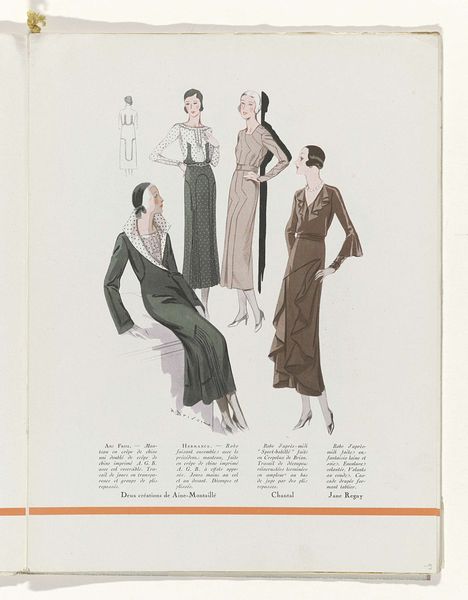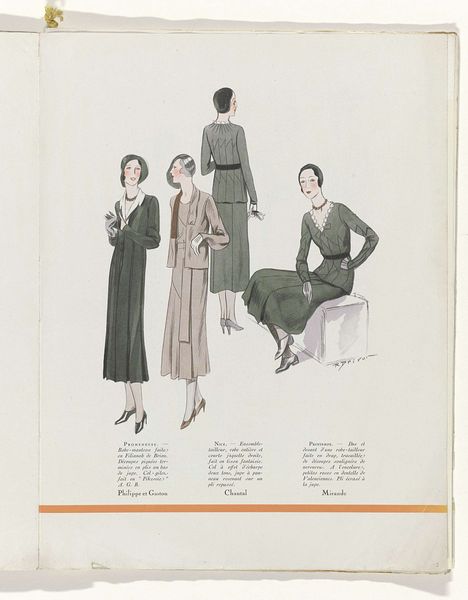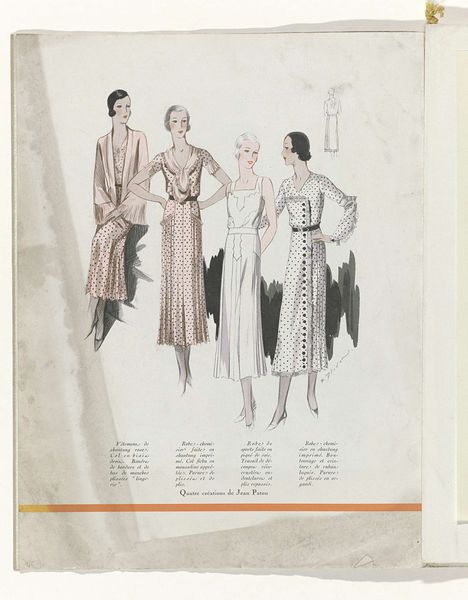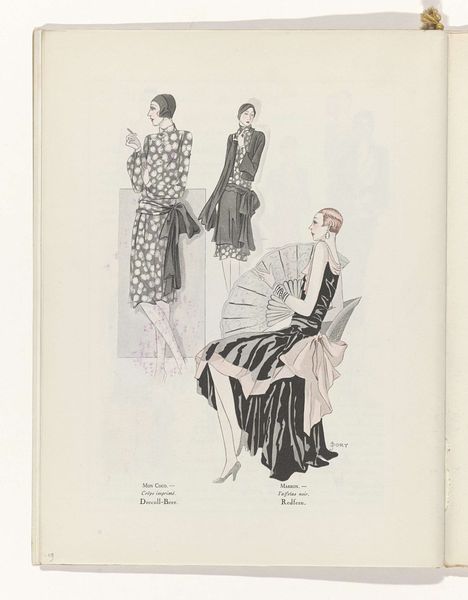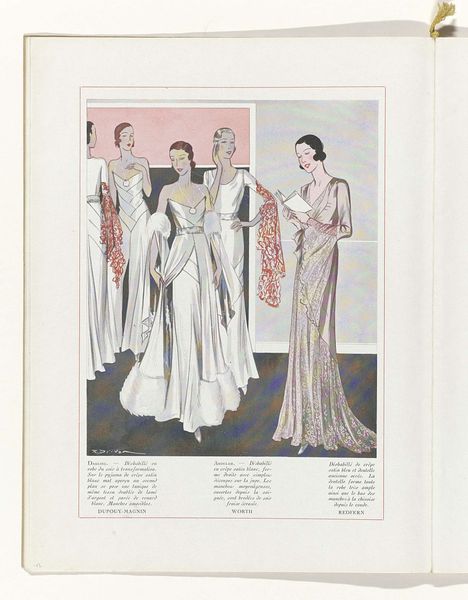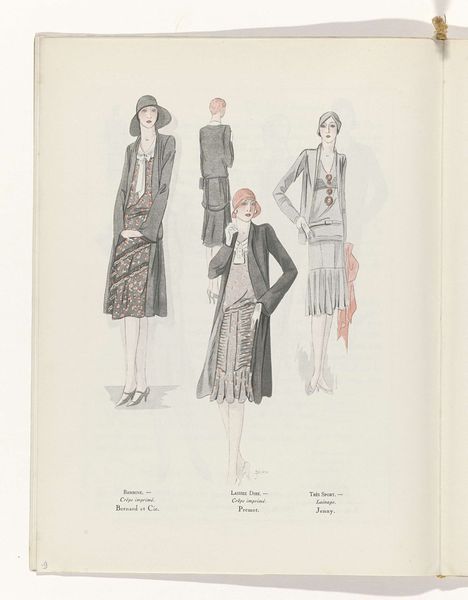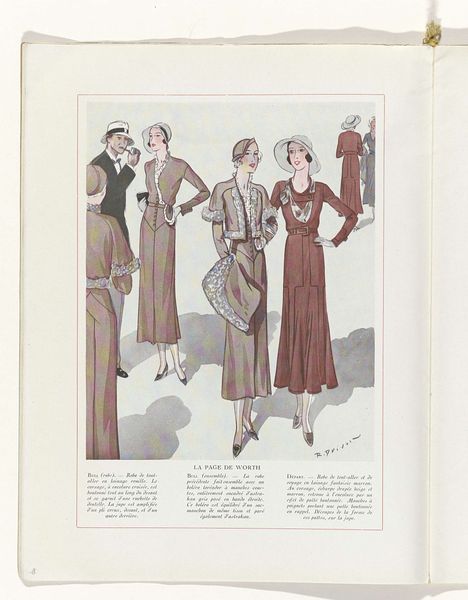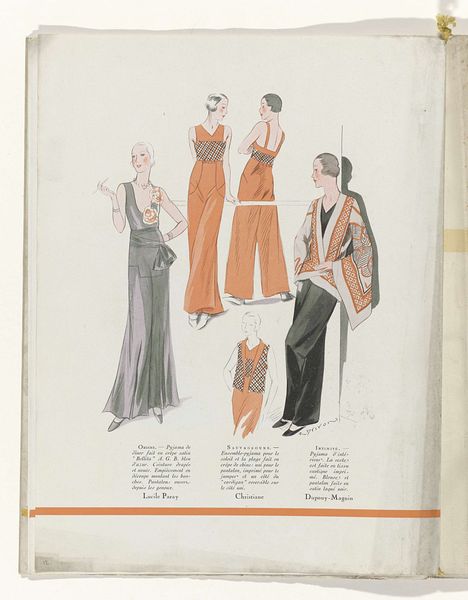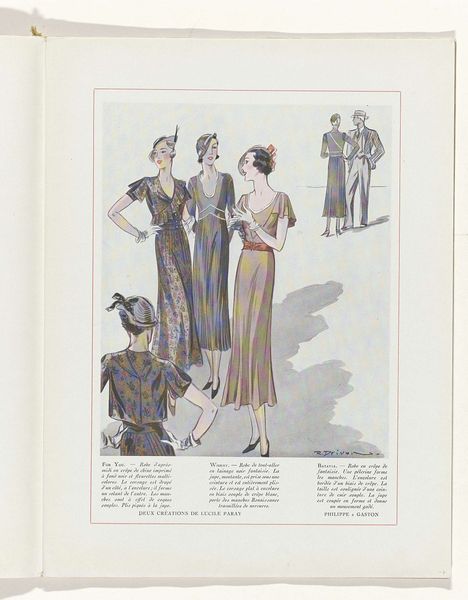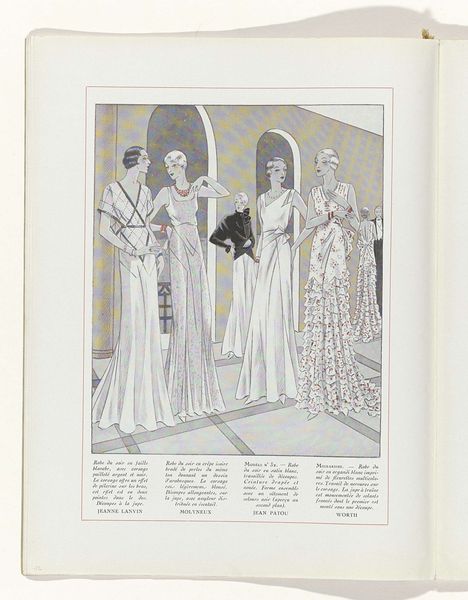
Art - Goût - Beauté, Feuillets de l' élégance féminine, Mai 1931, No. 129, 11e Année, p. 11 1931
0:00
0:00
drawing, graphic-art, paper, watercolor, ink
#
portrait
#
art-deco
#
drawing
#
graphic-art
#
figuration
#
paper
#
watercolor
#
ink
#
watercolour illustration
#
decorative-art
#
dress
#
watercolor
Dimensions: height 315 mm, width 240 mm
Copyright: Rijks Museum: Open Domain
Editor: This is a page from "Art - Goût - Beauté, Feuillets de l'élégance féminine," dated May 1931. It's an illustration, primarily ink and watercolor on paper, showcasing various dress designs by different houses. I find it fascinating how it captures the sleekness of the Art Deco era, yet the figures feel so detached, almost like mannequins rather than real women. How do you read the image? Curator: That detachment you’re sensing is key. Fashion plates like these were less about portraying individual personality and more about disseminating an ideal. The "garçonne" look, the androgynous, modern woman, was becoming increasingly popular, and this image is feeding into that narrative. But consider who this ideal was for. Who was being represented, and who was excluded? Editor: You mean in terms of race or class? Curator: Exactly. The figures are uniformly slender, white, and upper-class, embodying a very specific vision of modernity that excludes many. Think about the social and political climate of 1931. The shadow of colonialism was long, and beauty standards were deeply intertwined with power dynamics. How does this affect your reading of the work now? Editor: I see. It’s less a celebration of universal beauty and more a reinforcement of existing hierarchies through fashion. The elegant dresses now seem like a uniform for a select few. Curator: Precisely. By critically examining even seemingly benign images, like this fashion plate, we can begin to unpack the complex and often problematic ways that beauty, identity, and power intersect. What do you make of this conclusion? Editor: It shows that what looks beautiful at first sight could be the projection of something not beautiful in its cultural context. Thanks.
Comments
No comments
Be the first to comment and join the conversation on the ultimate creative platform.
